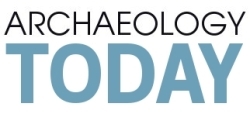
August 26th, 2013
Prehistoric Europeans Spiced Up Their Food
It seems that at least some of our prehistoric ancestors, like us, liked to spice up their food for a more palatable cuisine. So concludes a recent study led by Hayley Saul of the University of York. By examining isolated carbonized (burned) food deposits from pottery shards dated from ca. 6,100 to 3,750 BP from three sites in Denmark and Germany, Saul and colleagues identified phytoliths from plant remains that are likely mustard garlic seeds. Phytoliths are created when plants absorb silica from the soil. The silica is deposited within different intracellular and extracellular structures of the plant and, after the plants decay, it is redeposited in the soil in the form of phytoliths (from Greek, “plant stone”), which are rigid, microscopic structures of varying sizes and shapes. These phytoliths are naturally decay-resistant and are thus preserved in soil and other contexts, ready to be discovered and examined by archaeologists thousands, if not tens of thousands, of years later. (Popular Archaeology)
This 1,600-Year-Old Goblet Shows that the Romans Were Nanotechnology Pioneers
The colorful secret of a 1,600-year-old Roman chalice at the British Museum is the key to a supersensitive new technology that might help diagnose human disease or pinpoint biohazards at security checkpoints. The glass chalice, known as the Lycurgus Cup because it bears a scene involving King Lycurgus of Thrace, appears jade green when lit from the front but blood-red when lit from behind—a property that puzzled scientists for decades after the museum acquired the cup in the 1950s. The mystery wasn’t solved until 1990, when researchers in England scrutinized broken fragments under a microscope and discovered that the Roman artisans were nanotechnology pioneers: They’d impregnated the glass with particles of silver and gold, ground down until they were as small as 50 nanometers in diameter, less than one-thousandth the size of a grain of table salt. The exact mixture of the precious metals suggests the Romans knew what they were doing—“an amazing feat,” says one of the researchers, archaeologist Ian Freestone of University College London. (smithsonianmag.com)
Richard III’s skeleton came within inches of destruction
A team from the University of Leicester Archaeological Services (ULAS) have discovered during a second, follow-up dig, a massive disturbance at the Grey Friars site where the bones of the medieval monarch were found last year. The news comes one year on from when archaeologists began the Search for Richard III at the Grey Friars site on 25 August last year. (Phys.org)
Researcher offers fresh insights into the Dead Sea Scrolls
New research conducted by a Trinity College academic in Jerusalem offers new insights into one of the Dead Sea Scrolls, which is concerned with the mystery of existence. Dr Benjamin Wold, Assistant Professor in New Testament at the Department of Religions & Theology, has been conducting research on the Dead Sea Scrolls known as “4QInstruction” which is believed to have been composed around the mid-2nd century BC. Despite considerable efforts to reconstruct this scroll from multiple copies, experts believe that only about 30 per cent of the document remains. Found in the remaining passages are frequent admonitions to understand the “mystery of existence.” (Phys.org)
Bandelier to Open Popular Archaeological Site
One of the most popular sites at Bandelier National Monument is set to reopen Monday. Accessible only by a series wooden ladders and steep stone steps, the kiva at the Alcove House site is located at the edge of a niche some 14 stories above the canyon floor. The site was closed in April due to concerns over structural stability of the kiva. The walls of the structure had loosened and there were other signs of severe erosion. Although the kiva itself will remain closed, park officials said visitors will be able to climb the ladders that lead to the site and take in the view from 140 feet above the canyon floor. (ABC News)
Lincoln Castle archaeologists to extract sarcophagus
Archaeologists are preparing to extract a sarcophagus discovered at Lincoln Castle and thought to contain “somebody terribly important”. The stone sarcophagus, believed to date from about AD900, was found alongside the remains of a church which was previously unknown. Archaeologists have been on site for almost a year and their work came to an end this week. They believe the sarcophagus could contain a Saxon king or bishop. (BBC News)
Feasting and fighting: the long-lost secrets of Beowulf
The dark secrets of the legend of Beowulf, England’s oldest work of epic literature, are gradually emerging from under a field in eastern Denmark. Archaeologists in the country’s earliest royal ‘capital’ – Lejre, 23 miles west of modern Copenhagen – are investigating the joys of elite Dark Age life in and around what was probably the great royal feasting hall at the violent epicentre of the Beowulf story. (Independent.co.uk)
Early South Americans conquered the Atacama desert
The heart of the Atacama desert is the driest place on Earth. But that didn’t prevent the first settlers of South America from setting up home there more than 12,000 years ago. Aside from Antarctica, South America was the last continent that modern humans colonised, says Claudio Latorre of the Pontifical Catholic University of Chile in Santiago. The first settlers arrived from North America at least 14,000 years ago, but their route south is a mystery. Most researchers assume they travelled through fertile corridors, perhaps down the west coast where seafood was plentiful, at least until you hit the desert. “Extreme environments, such as the Atacama, were naturally assumed to be barriers,” says Latorre. “This was not the case.” (NewScientist)





